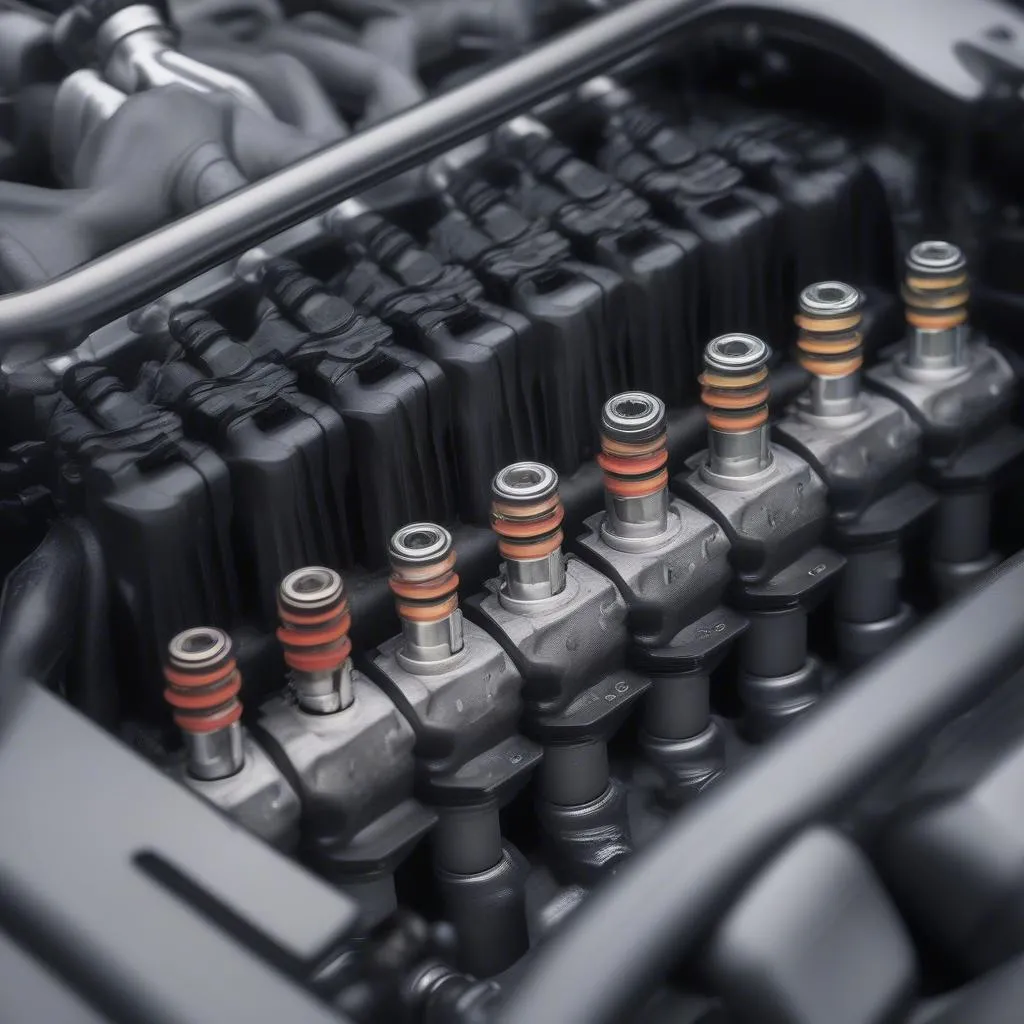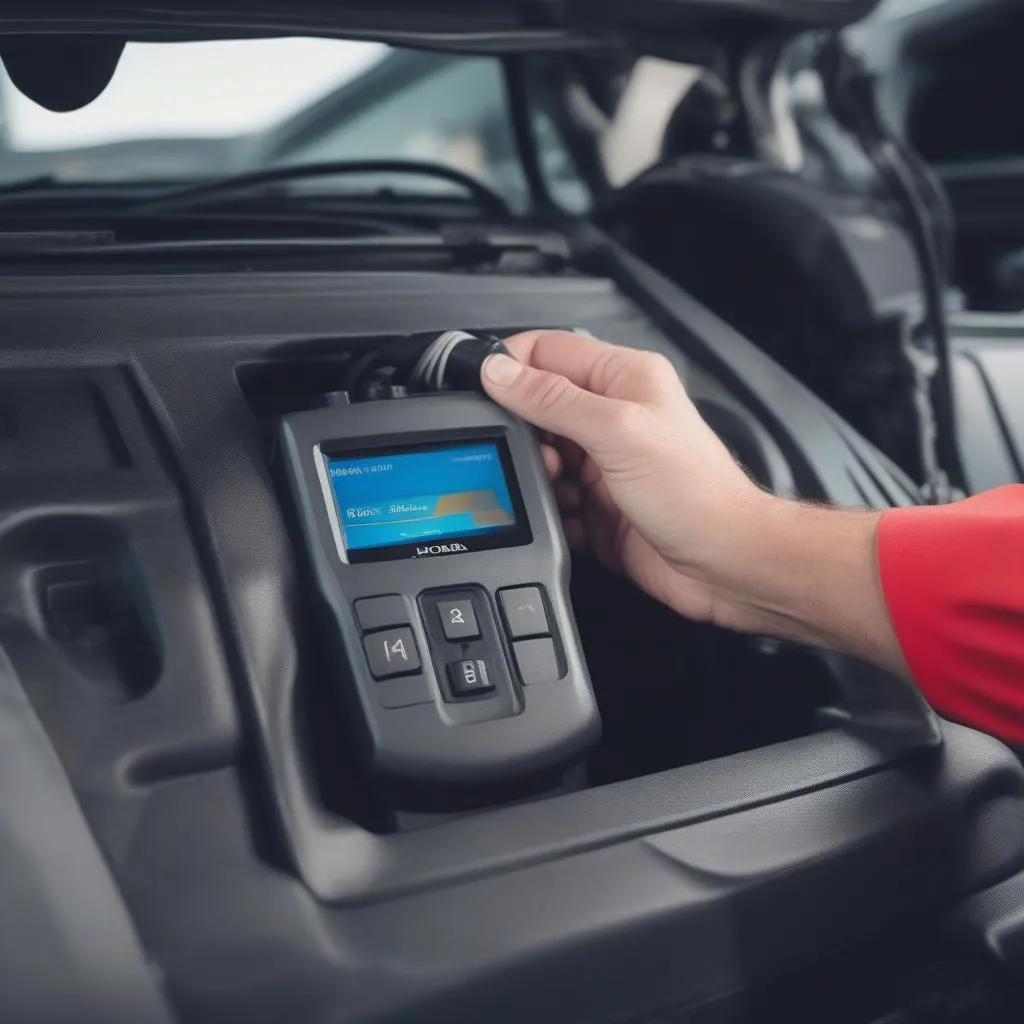Imagine this: You’re cruising down the Pacific Coast Highway in your Honda Accord, the California sun warming your face. Suddenly, your “Check Engine” light illuminates, casting a shadow over your blissful drive. You pull over, perplexed. Could it be the injectors?
Understanding How To Identify Honda Obd Ii Injectors can be your key to diagnosing and potentially fixing the issue, getting you back on the road and enjoying that California sunshine.
Decoding the Mystery: What are Honda OBD II Injectors?
Before we delve into identification, let’s break down what these components are and why they matter.
The Heart of Your Engine’s Fuel System
In simple terms, fuel injectors are the gatekeepers of your Honda’s engine. They’re responsible for delivering a precise amount of fuel into the combustion chamber, where it mixes with air and ignites to power your vehicle. OBD II, or On-Board Diagnostics II, is a standardized system used in vehicles from 1996 onwards to monitor and report on various systems, including the fuel injectors.
Why Identification Matters
Identifying faulty injectors is crucial for a smooth-running engine. Malfunctioning injectors can lead to:
- Reduced fuel efficiency: Imagine filling up your tank more often than usual – not ideal, right?
- Decreased engine performance: Your Honda might feel sluggish, especially when accelerating.
- Increased emissions: Faulty injectors can contribute to harmful emissions, impacting the environment.
Identifying Honda OBD II Injectors: Your Step-by-Step Guide
While it’s best to consult a professional mechanic for a thorough diagnosis, here are some methods to help you identify your Honda’s OBD II injectors:
1. Consult Your Owner’s Manual
Your Honda’s owner’s manual is like a treasure map leading you to essential information, including the location and specifications of your fuel injectors. It’s always a good starting point.
2. Visual Inspection
Open the hood and locate the fuel rail – a metal bar running along the top of the engine. The injectors are typically positioned along this rail, resembling small cylinders with electrical connectors.
3. Decoding the Part Number
Each injector has a unique part number etched on its body. This number is essential when searching for replacements or researching compatibility.
4. Using an OBD II Scanner
An OBD II scanner, like the Innova 3100 (which you can read more about in our Innova 3100 OBD II Code Reader Manual), can be plugged into your car’s OBD II port, usually located under the dashboard. The scanner can retrieve diagnostic trouble codes (DTCs) related to fuel injectors, giving you a better understanding of potential issues.
 Honda OBD II Injector Location
Honda OBD II Injector Location
Common Questions About Honda OBD II Injectors
Let’s address some frequently asked questions that often arise when discussing this topic:
How Often Should I Replace My Honda’s Fuel Injectors?
While there’s no fixed replacement interval, most mechanics recommend inspecting and cleaning injectors every 30,000-60,000 miles. Replacement might be necessary if cleaning doesn’t resolve performance issues.
Can I Clean My Honda’s Fuel Injectors Myself?
While DIY injector cleaning kits are available, it’s a delicate procedure that requires caution. If you’re unsure, seeking professional assistance is advisable.
What are the Signs of a Bad Fuel Injector?
Apart from the “Check Engine” light, other symptoms might include rough idling, engine misfires, hesitation during acceleration, and decreased fuel economy.
Related Questions and Further Exploration
You might also be interested in:
- Understanding Honda OBD II Monitors: Learn how OBD II monitors keep track of your engine’s health.
- Monitoring Air-Fuel Mixture with OBD II: Discover how to monitor and optimize your Honda’s air-fuel ratio for optimal performance.
- Honda Civic 2017 OBD Issues: Explore common OBD-related problems encountered in the 2017 Honda Civic model.
You can find more information about these topics on our website. For instance, you can check out our article on Honda Civic 2017 OBD for a deeper dive into that model’s specific concerns.
Need Expert Assistance? We’re Here to Help!
If you’re facing challenges with your Honda’s OBD II injectors or need help with any diagnostics tools, our team of expert mechanics is just a message away. Contact us on Whatsapp at +84767531508 for 24/7 support. We’re here to get you back on the road and enjoying the drive.
 Honda OBD II Scanner
Honda OBD II Scanner
Keep Your Honda Running Smoothly
Identifying and maintaining your Honda’s OBD II injectors is vital for a healthy engine and a smooth, enjoyable driving experience. Remember, regular maintenance and timely diagnosis can save you from headaches and costly repairs down the line.
We encourage you to share your thoughts, questions, or experiences in the comments section below. Let’s learn from each other and keep our Hondas running their best!